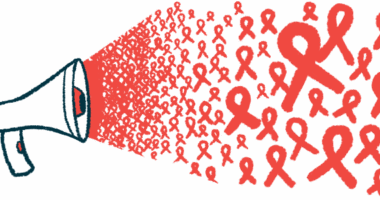Springtime Brings Renewed Opportunity for Activity and Adventure

It’s been a sedentary, stale winter in the northern U.S. Spring is afoot, and I am abuzz. This time of year, I start to feel the pull to become more active again.
This season is prime time for people to get outdoors, and I am no different. In my spare time, I enjoy hiking trails. I can often be found wandering the forest, listening for birds calling out and beckoning me to go farther among the towering trees. I like to take photographs while on the trails and drink in all that nature has to offer.
Pine cones and acorns become windblown from the trees, tumbling carelessly across the path. If I am alone, I’m left to contemplate my life with Becker muscular dystrophy and how things might change for me.
At times, I feel like those pine cones and acorns that are being flung to the ground. Due to fatigue, my Becker muscular dystrophy wreaks havoc on this pastime that I love. The risk of falling is always present. This early in the spring season, ice patches still clinging to life force me to plan alternate routes to avoid slipping.
Spring is a time for me to put on my shoes and go on adventures. At the same time, my body isn’t in shape for the physical demands that come with the changing of seasons and a passion for exploration. I often feel like the Tin Man from “The Wonderful Wizard of Oz,” discovered rusted in the forest by his traveling companions. My joints aren’t quite ready for strenuous activity, and I am slower than I was in the autumn. I’ve rusted.
Like the Tin Man, I’m on a journey to find my heart again — a heart resting in the forest after a long wintertide. I seek a wise wizard to aid me in my quest and equip me with the gift I require: dystrophin. I continue my search.
While Becker muscular dystrophy currently has no treatment options, studies have investigated the role physical activity plays in disease progression. It was long believed that for people with Becker muscular dystrophy, exercise could cause muscle damage and result in increased plasma creatine kinase in the blood, which indicates muscle destruction.
In 2008, a study published in Brain: A Journal of Neurology disproved this idea. Researchers asked 11 patients with Becker muscular dystrophy and seven healthy individuals to do regular cycling as a moderate form of physical activity. Half of the patients stopped cycling after 12 weeks, while the rest continued for a year.
All patients showed increased muscle strength while their creatine kinase levels remained stable. Although it was small, this study demonstrated that moderate exercise does not destroy muscles in people with Becker, as previously believed. Conditioning is crucial in maintaining muscle strength, and when not strenuous, it can have positive results for those still able to be active.
I can tell when I’m deconditioned by how my muscles feel at the beginning of the season. During activity, my legs begin to feel tight, and a warmth spreads across my lower limb muscles. Whenever hiking trails include stairs, steep hills, or uneven ground, I often experience fatigue and need breaks.
I find I have less muscle tightness when my body has time to reacquaint itself with increased activity. As I grow older, I can’t shoot out of the gate quite like I used to. When I’m knocking off the copper corrosion in the springtime, I must recognize my limits and know when to turn around and stick with less taxing terrain.
After giving thought to these issues, I begin searching for a different type of aid: a walking stick. Whenever I fall or slip, I have difficulty bringing my body upright. I try to find an incline to prop my legs on and push off.
For the most part, I’ve had good luck with this modification, but luck has a way of running out. With Becker, my leg and hip muscles are affected more than my upper body muscles, so a walking stick would give me the ability to grab something and pull up on it. And if I look like Gandalf fighting off a Balrog, so be it.
With encouragement from my friends and a little oil from the can, I’m able to get out and set course for adventure once again. I may not have options yet to boost my lackluster dystrophin, but I have the courage to remain as active as I possibly can. I have the heart to believe in myself. I have the brains to search for creative ways to hang on to the hobbies I love.
And lastly, I still have the shoes to follow the yellow brick road to my own happiness. Your move, muscular dystrophy.
***
Note: Muscular Dystrophy News is strictly a news and information website about the disease. It does not provide medical advice, diagnosis or treatment. This content is not intended to be a substitute for professional medical advice, diagnosis, or treatment. Always seek the advice of your physician or another qualified health provider with any questions you may have regarding a medical condition. Never disregard professional medical advice or delay in seeking it because of something you have read on this website. The opinions expressed in this column are not those of Muscular Dystrophy News or its parent company, Bionews, and are intended to spark discussion about issues pertaining to muscular dystrophy.







Leave a comment
Fill in the required fields to post. Your email address will not be published.